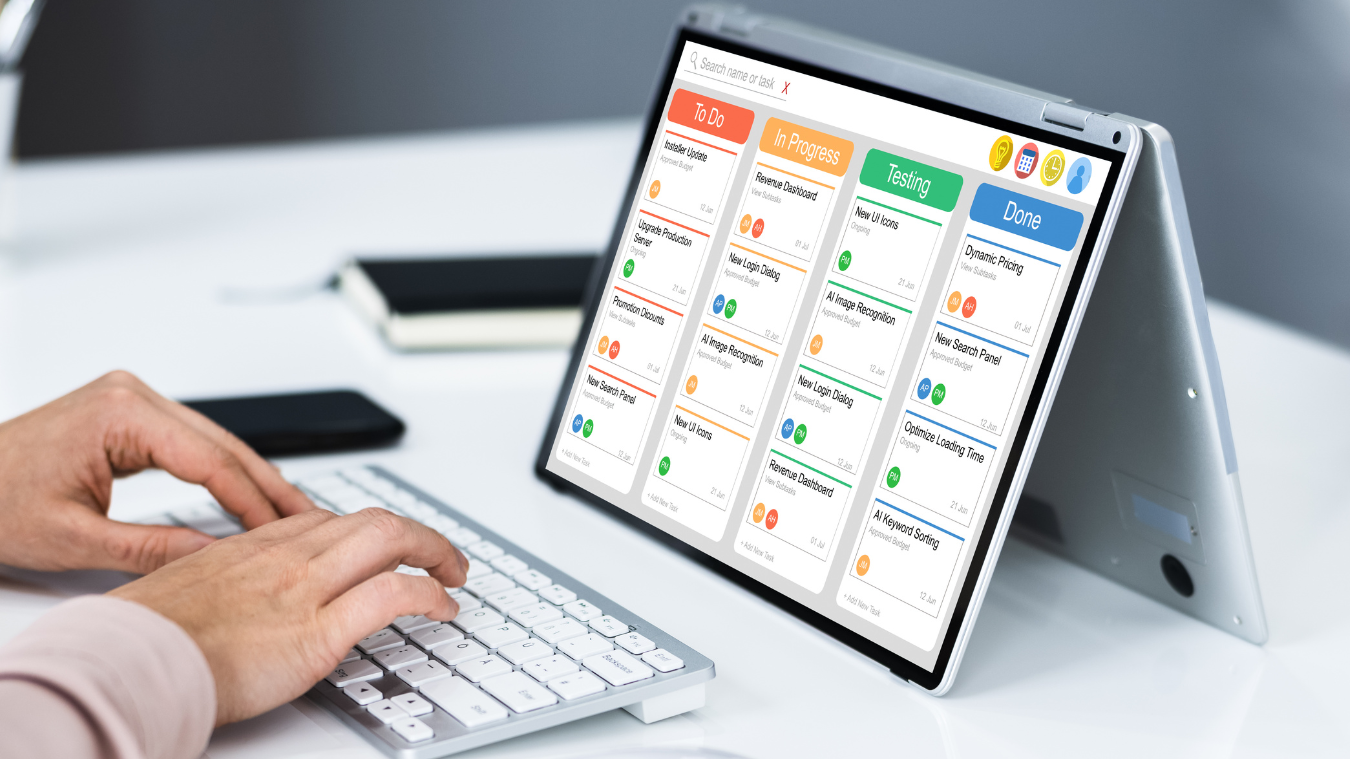Project Management Made Simple: A Guide for Small Businesses

As a small business starts to do more business, effective project management becomes more and more important. Establishing processes and (eventually) finding and implementing the right project management software can significantly enhance collaboration, organization, and overall project success, especially as your business grows.
Here are some things to keep in mind:
Begin with the End in Mind
In Dr. Stephen R. Covey’s The Seven Habits of Highly Effective People, the second habit is to “begin with the end in mind.” In the context of project management, that means starting each project with a clear vision of where you are going and a pinpointed destination. This will set the framework for a proactive rather than reactive approach to getting the job done.
Think About What Your Project Needs
Consider what is required to get to your desired destination and think through what will become the stages of the project as it travels through its “life cycle.” Some phases often include:
- The Conception Phase: This is the stage where you define the project, understand the “why,” and obtain (or give yourself) approval.
- The Planning Phase: During this stage, you create your project’s plan, determine your budget and obtain the necessary resources. Start to set your goals and parameters for risk.
- The Execution Phase: Start working through the steps of the project! During execution, look for mini-markers that ensure your progress aligns with your desired outcome.
- The Monitoring Phase: Your project is underway! If you have team members executing parts of the project, continually check on their progress, address issues as they arise, and adjust plans to keep on track to your destination. If it is just you working on this project, keep the goal in mind as your project moves toward completion.
- The Closing Phase: Cross the finish line. Conduct any necessary post-mortem evals and celebrate the successful completion of your project!
Do You Need A Project Management System?
No! But it could help.
Often, a simple written outline or spreadsheet can document the steps and stages of a project and keep everything organized. But when undertaking projects that involve multiple tasks, team members, and timelines, a project management tool can help bring structure and organization to the project.
A project management system is a tool or platform that helps organize projects and overall business operations. It allows you to break down complex projects into smaller, manageable tasks, set dependencies, and track your progress. Project management systems can be especially useful in the age of remote work because they enable team members to access project information, update tasks, and communicate regardless of their physical location.
Using a project management tool can be empowering in that it can help you streamline your workflow, enhance collaboration, improve your time management, and provide insights into a project’s performance.
But not all projects require them. Sometimes a simple shared document with expectations, stages, and checkpoints is all that is required to get the job done.
But, as your business expands, you might find yourself outgrowing your “zero draft” of project management. Having manual or disjointed systems can wind up creating significant challenges and hold you back from being as efficient and productive as possible as your projects increase and their complexity intensifies.
Project management tools often allow for greater scalability and growth.
Choosing the Right Tool For You
When you are ready to evaluate project management tools, you should consider several factors to find the right fit for your business:
- Cost: Consider the pricing structure, whether it’s a one-time purchase, subscription-based, or free with limited features. Evaluate the price based on your budget and the value the tool provides for your specific needs. One size does not fit all.
- Ease of Use: Look for user-friendly interfaces and intuitive navigation. Consider whether the tool offers a short learning curve and provides adequate support and training resources.
- Scalability: Assess whether the tool can truly accommodate your business’s growth. Will it be able to handle an increasing number of projects, users, and data without significant limitations?
- Collaboration Features: Determine if the tool offers features like task assignments, team communication, file sharing, and real-time collaboration to facilitate efficient teamwork. If it doesn’t, keep looking!
- Customization and Integration: Consider the ability to customize the tool to fit your specific project management needs and integrate with other essential tools or platforms used in your business.
- Security: Assess the security measures implemented by the tool, such as data encryption, user access controls, and regular backups, to ensure the protection of sensitive project information.
Here are a few inexpensive project management software options, along with their pros and cons:
TRELLO
Pros: User-friendly interface, visual boards for task management, easy collaboration, customizable workflows, and integrations with other tools.
Cons: Limited reporting features may lack advanced project management functionalities for complex projects.
ASANA *(a FMVS favorite!)
Pros: Intuitive interface, robust task management features, project templates, timeline visualization, team collaboration, and integration options.
Cons: Advanced features like portfolio management and custom fields require premium plans and limited reporting capabilities in the free version.
CLICKUP
Pros: All-in-one project management solution, customizable views, task automation, time tracking, document management, and integrations.
Cons: Complexity for beginners, learning curve, certain advanced features limited to higher-priced plans.
AIRTABLE
Pros: Flexible and customizable project management tool, combines spreadsheets and databases, offers various views, collaboration features, and integrations.
Cons:
It may require customization for specific project management needs and limited reporting capabilities compared to specialized tools.
Ready To Delegate Parts Of Your Project?
Outsourcing or delegating parts of your project to a
virtual assistant can be a valuable strategy to lighten your workload and focus on core business tasks. Even if you don't yet have a project management tool, a virtual assistant can help you organize your tasks and ensure your projects will be completed. If you're working in your business and thinking about the projects you have and the processes you use, consider if bringing on a remote team member might be helpful. What will it take to get your project to the finish line? Would having administrative support help ensure success? Would having someone automate tasks and spot-check deliverables ease some of the burden for you?
If you choose to bring on a virtual assistant, be sure to establish effective communication channels and clearly communicate deadlines. Provide access to any necessary tools and/or platforms they may require. Regularly check in on task progress and provide timely feedback or guidance as needed. Remember, effective communication, clear instructions, and ongoing feedback are vital when outsourcing tasks to a virtual assistant.
Using a simple project management methodology (i.e., beginning with the end in mind), considering the benefits of project management platforms, and strategically delegating tasks, you can efficiently complete tasks and create a foundation for future projects!
Reach out to Freedom Makers Virtual Services'
Discovery Team to learn more about how a virtual assistant can help you with your project management needs!














